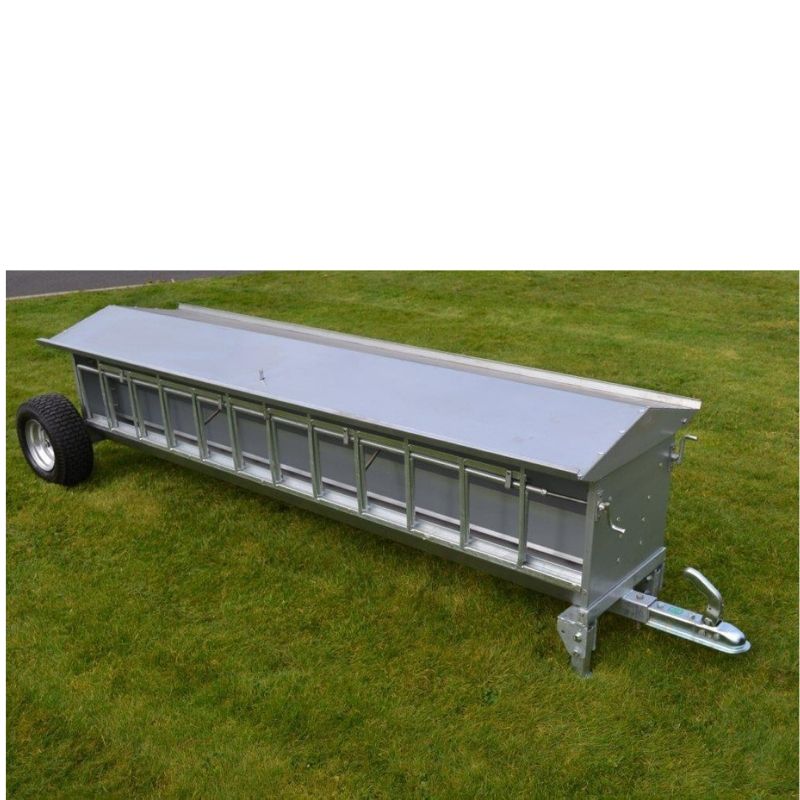
An Illinois study compared limited or unlimited intake of corn or soybean hulls (Faulkner et al., 1994).

Reported feed efficiencies (feed/gain) have been lower when using these supplements compared to high energy, low protein grains and by-product feeds. Protein-based creep feeds are often fed in limited amounts by including salt in the feed. Daily intake of creep feed can affect feed efficiency. Creep feeding has been most effective in drought situations or whenever quantity or quality of pastures does not meet the growth requirements of the calf. If high quality forage is available, forage intake will be reduced and the benefits in animal performance over the no-creep system will diminish. One factor that greatly affects creep feed consumption and efficiency is the quantity and quality of available forage. Therefore, if creep costs more than $120 per ton, it may not be profitable. If feed conversion is 9 pounds of feed per pound of added gain, a feed price of $120 per ton would equal $0.54 per pound of added gain, which is about breakeven. Remember, feed costs per pound of gain should be in the range of $0.50 to $0.60 to make creep feeding profitable. For practical purposes, use a conversion of 9 pounds of feed per pound of added gain when determining how much can be paid for creep feed. Cost of gain is calculated by dividing total feed costs per calf by added gain per calf. The relationship between feed conversion and feed cost determines the cost of gain ( Table 1). Therefore, in most years, it must cost less than $0.50 to $0.60 to add 1 pound of gain. Over a wide range of prices, added gain is worth about $0.50 to $0.60 per pound. The additional 60 pounds of gain would generate $33 or $0.55 per pound of added gain. In this situation, the 550-pound steer would generate $413 (550 x $0.75) and the creep-fed calf would generate $439 (610 x $0.73). When calf prices are low, the 550-pound steer may be worth $0.75 per pound and the creep fed steer may only be discounted $0.03 instead of $0.05.

The additional 60 pounds of gain would generate $36 or $0.60 per pound of added gain. The non-creep-fed steer would generate $605 (550 x $1.10/pound) and the creep fed steer would generate $641 (610 x $1.05). When calf prices are high, a non-creep-fed steer weighing 550 pounds may be worth $1.10 per pound while the creep fed steer would be worth $1.05. Creep feeding grain for 100 days should add approximately 60 pounds of weaning weight to a calf. However, the higher the calf prices, the greater the discounts as calves increase in weight. Producers generally assume that creep feeding is more valuable when calf prices are high. In a creep grazing system the increase in calf weights would have to be evaluated against the cost per acre of creep forage, the number of calves carried per acre and the amount of extra weight produced per acre of creep grazing.

The conversion of feed to gain can vary from 3 to 12 pounds of feed for each pound of gain above non-creep-fed calves. It is futile to spend more than the market price to produce additional weight gain. The first factor to consider is the cost of the added gain. This publication discusses the advantages and disadvantages of creep feeding. Creep feeding, like any other supplementation practice, must be analyzed based on estimates of expected increases in performance and income compared to the costs of these improvements. Each system generally produces increased growth, which may or may not be profitable. Creep feeding systems vary from grain-based energy supplements to limit-fed protein supplements to creep grazing. Nutrient deficiency is more pronounced when calves graze late summer or drought stricken pastures, and during the winter when no grazing is available.Ĭreep feeding can be implemented in various forms or systems regardless of method chosen. Depending on availability and quality, forage may not be able to supply the other 50 percent of nutrients the calf needs. A lactating beef cow can supply only 50 percent of the nutrients a three- to four-month-old calf needs to maximize growth. This is usually done with the use of a creep gate, which is large enough for calves to enter the feeding area but too small to allow cows to pass. Creep feeding is the practice of providing supplemental feed (grain or forage) to nursing calves.


 0 kommentar(er)
0 kommentar(er)
